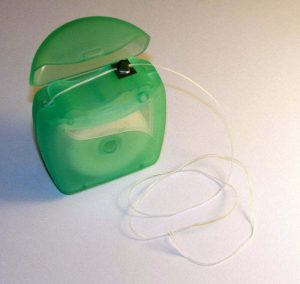Ask most people what’s the correct order for brushing and flossing, and they’ll tell you to brush first. However, that’s incorrect! Dentists aren’t sure how this steadfast order came to be, but if you finish your dental regimen with flossing, you’re not cleaning your teeth—your simply releasing plaque, bacteria and food buildup into your mouth where it will sit. Many people need to switch up their routine and floss first, brush second.

This is especially important since most flossers only floss once per day, and that’s at bed time. “Morning breath” is caused because you spend a long stretch of time sleeping with your mouth closed. You aren’t drinking water, chewing, talking, or otherwise performing any activity that keeps saliva getting produced and moving around your mouth.
Do you really want to spend hours with plaque buildup and food bits sitting stagnate in your mouth? Always brush your teeth after flossing, and consider adding an alcohol-free mouthwash into the mix.
How to Floss
 How we floss is just as important as when we floss. At every dental visit and check-in, your dentist or hygienist should go over proper brushing and flossing techniques with you. Flossing requires getting deep into the pockets between your teeth and gums, but many people worry about hurting themselves. This is especially true if you’re just working on adding or re-adding flossing to your daily routine. It’s common for gums to bleed with flossing and even brushing, but it’s also a sign of gum disease. Your body is telling you that you need more and better dental care—not less.
How we floss is just as important as when we floss. At every dental visit and check-in, your dentist or hygienist should go over proper brushing and flossing techniques with you. Flossing requires getting deep into the pockets between your teeth and gums, but many people worry about hurting themselves. This is especially true if you’re just working on adding or re-adding flossing to your daily routine. It’s common for gums to bleed with flossing and even brushing, but it’s also a sign of gum disease. Your body is telling you that you need more and better dental care—not less.
Flossing requires getting between every single tooth, including the wisdom teeth (which can be a challenge!). Water picks can be a great alternative if traditional flossing is difficult, letting you get farther back and into nooks and crannies that requires the most attention.